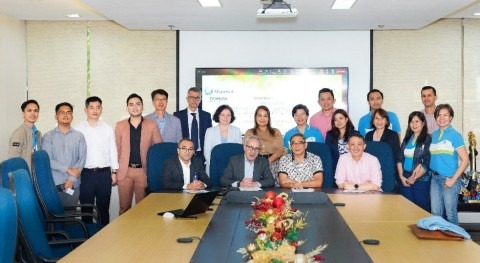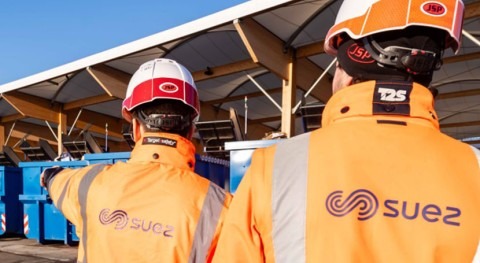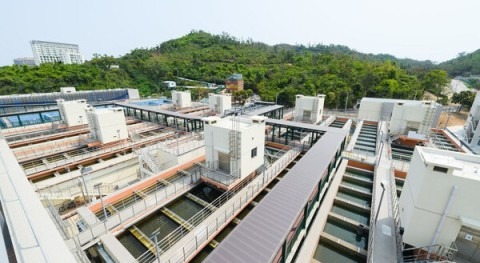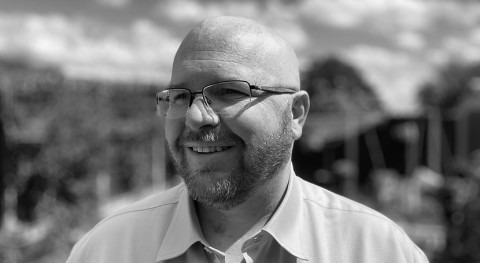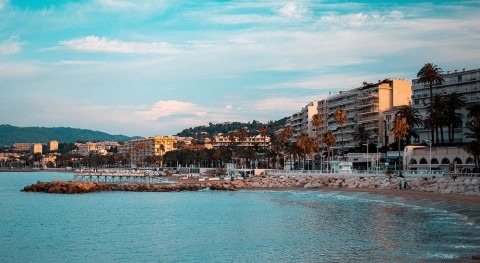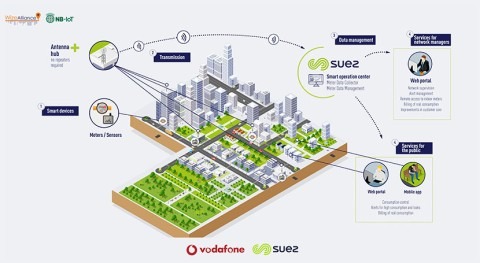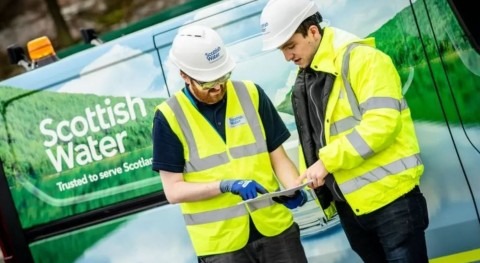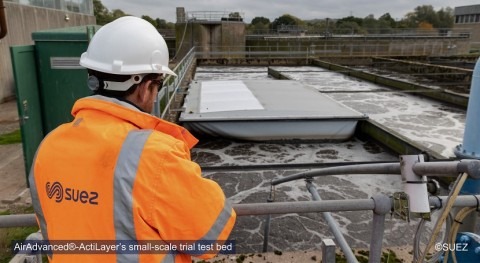The Pau Béarn Pyrénées (64) Agglomeration Community has entrusted the operation of a wastewater decontamination plant in Lescar and the construction of methanization and methanation plants to a consortium led by SUEZ and composed of Storengy (an ENGIE subsidiary), Egis, Sogea/Vinci and Camborde Architectes. The contract, generating cumulative revenue of €79 million, will start on January 1st, 2022 for a period of 17 years, with two years of works.
The Pau Béarn Pyrénées Agglomeration Community places the recovery of wastewater at the heart of the dynamic of local ecological transition
The Agglomeration Community supports a proactive environmental policy and aspires to achieve carbon neutrality by 2040. It intends to favor the production of renewable energies and is actively working on the emergence of a hydrogen sector. As part of an unprecedented approach, the wastewater decontamination plant in Lescar now plays a key role in the local initiative for adapting to climate change. It becomes a real “production station for energies and resources” resulting from wastewater: a “Biofactory” developing 10 resources and green energies in a strong synergy approach with the surrounding infrastructures of the Cap Ecologia site. This environmental showcase is part of an ambitious regional project and consolidates the hydrogen sector in Pau while creating sustainable local jobs.
The project includes two global technological firsts, which will allow for a considerably increase in the amount of biomethane produced by the new methanization plant. They address the important issue of sewage sludge recovery, enabling the local community to anticipate future regulatory developments.
• “Ultra-dehydration” through hydrothermal carbonization is a new technology which reduces sewage sludge volume by a factor of four by consuming 3 to 4 times less energy than a conventional thermal dryer all while reducing potential disturbances associated with drying. This SUEZ process significantly increases the production of biomethane and produces a new additional material resource, Biochar, which can be recovered either by returning it to earth or by combustion for energy production.
• The site’s energy performance is increased by the production of synthetic methane from the methanation of carbon dioxide (CO2, a greenhouse gas). The latter, resulting from the methanization process, is usually released into the atmosphere. The innovative catalytic methanation technology implemented by Storengy for the first time in the world at the industrial stage in such a facility, will make it possible to transform all the CO2 emitted into synthetic methane, a renewable green gas. This major technological breakthrough has a double advantage: the additional production of 4,400 MWh/year of green gas over time and an unmatched carbon footprint.
The total biomethane produced by the site will therefore be 13,000 MWh/year over time, or the energy equivalent to heating 1,200 households.
The emissions produced will be reduced by 50% compared to the current facility, at the end of works. This reinforces the site’s contribution to the objectives of the regional climate plan. This carbon footprint is enriched by the production of new resources that avoid the emission of 3,143 tons of CO2 per year.
An ambitious regional project, integrated into a unique environment, the Cap Ecologia site
The wastewater decontamination plant is connected to the infrastructures of the Cap Ecologia environmental site: the Valor Béarn Waste-to-Energy household waste plant, the urban heating network, and the future photovoltaic electricity production plant which will be developed on the rehabilitated site of the former waste storage center. The project is scalable and will be able to meet new green hydrogen needs in the region, enabling the development of low-carbon mobility and the supply of heat to future facilities (market produce and aquaponics farms).
The prevention of disturbances will constitute a step forward for the Cap Ecologia site. A combination of advanced air treatment technologies has therefore been developed to prevent any risk of odors.
The natural character of the site is reinforced by the lines of trees which structure it, the establishment of a school grove (micro-forest) and a flower meadow. These elements contribute to preserving the biodiversity of the site (green corridor) and to supporting the environmental and educational ambitions of Cap Ecologia.
A pioneering facility for the production of 10 energies and resources
The decontamination plant becomes a green energy and resource production facility, using wastewater and CO2. Within a sustainable development and short-circuit circular economy approach, it will produce biomethane, synthetic methane, Biochar (energetically recoverable by Valor Béarn or through composting for farmland soil improvement), heat, electricity, nitrogen fertilizer, oxygen, green hydrogen, reused water, and vegetable crops locally.
In parallel, energy-efficient processes will be implemented and the facility will produce more energy than it consumes: a positive energy wastewater decontamination plant.
François Bayrou, President of the Pau Béarn Pyrénées Agglomeration Community:
“As part of its ambition to achieve carbon neutrality by 2040, the Agglomeration Community is structuring an innovative region at the service of ecology. After the commissioning of Fébus, the high-level service hydrogen bus, the ongoing construction of a major urban heating network supplied by a Waste-to-Energy plant and the creation of several photovoltaic plants and the biomethanization and methanation facilities at the Lescar wastewater decontamination plant will contribute to the region’s ambitious renewable energy production objectives. The Agglomeration Community will thus transform two wastes into sustainable and wealth-creating green energy sources. These facilities, which will make Cap Ecologia a veritable cathedral of the circular economy and energy transition, will also have a vocation to be integrated into the hydrogen sector project in the Lacq-Pau-Tarbes Industry Region.”
The Pau Béarn Pyrénées Agglomeration is supported by the scientific and technical expertise of SUEZ and its partners to continue its adaptation to climate change. Wastewater is a major element in the ecological dynamics of this region, which will benefit within two years from two global—technical and technological—firsts aimed at increasing biomethane production. Our teams and consortium partners are proud to support the environmental ambition of the Pau Béarn Pyrénées agglomeration.
Maximilien Pellegrini, CEO Water France




